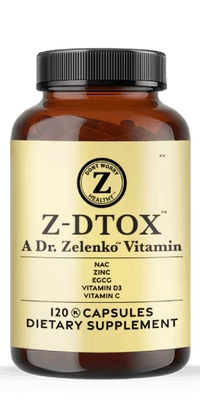Just as Achilles’ heel was his singular point of vulnerability, so too is our immune system often at the mercy of the ever-mutating influenza virus. You’ve likely been inundated with the annual campaigns promoting flu vaccines as your frontline defense, but beyond these preventive shots lie the realm of antiviral medications—an additional shield in the armory against flu. These drugs aren’t your typical over-the-counter cold remedies; they require a prescription and are most effective when taken early in the course of the illness. While you may be aware that antivirals can help to mitigate symptoms and shorten the duration of the flu, you might not know the nuances of their role in preventing serious complications, especially in those who are more susceptible. As winter approaches, understanding how and when to use these medications could be crucial, so let’s explore the often-underrated world of antivirals. What might not be so clear, however, is how these drugs interact with other medications, how they should be managed, and what side effects one should be vigilant about.
Key Takeaways
- Antiviral medications specifically target influenza viruses.
- Antiviral drugs are recommended as a preventive measure for high-risk individuals.
- Antiviral medications offer an additional layer of protection for individuals at heightened risk of severe complications.
- Antiviral drugs can prevent infection or reduce the severity of the flu when taken before or after exposure.
Understanding Antiviral Drugs

Antiviral medications are prescription drugs that specifically target influenza viruses, offering a line of defense for individuals diagnosed with the flu. These drugs function distinctly from antibiotics; they combat influenza directly and are ineffective against bacterial infections. As such, understanding antiviral drugs is crucial for those in the healthcare field, looking to reduce the risk of flu complications among patients.
Flu antiviral drugs are not accessible over the counter and must be prescribed by a healthcare provider. They play a pivotal role in flu prevention, especially for high-risk populations. For those presenting with flu symptoms, early antiviral treatment — ideally within 48 hours of onset — can significantly reduce the duration and severity of the illness. This early intervention is key to prevent complications such as pneumonia and hospitalizations.
It’s important to note that not everyone with mild flu symptoms needs an antiviral. Healthcare providers should assess individual risk factors such as age, underlying medical conditions, and the severity of symptoms before prescribing these medications. This discernment ensures that antiviral drugs are used effectively and responsibly, addressing the needs of those most vulnerable to serious flu-related outcomes.
Understanding antiviral drugs also means recognizing their limitations. They are not a cure for the flu but can alleviate symptoms and shorten the time you’re sick. Furthermore, they are not a substitute for the flu vaccine, which remains the most effective method for preventing influenza. In summary, antiviral medications are a valuable tool in the fight against influenza when used appropriately, reflecting a commitment to patient care and public health.
Identifying At-Risk Populations
While understanding antiviral drugs equips healthcare providers to treat the flu effectively, it’s equally critical to identify which patients are more susceptible to severe complications and may benefit most from these medications. You’re tasked with discerning the at-risk populations who are at a higher risk for flu complications and may require preventative antiviral treatment.
Individuals with certain health conditions are at an increased risk of developing severe complications from the flu. These conditions include:
- Chronic lung diseases, such as chronic obstructive pulmonary disease (COPD)
- Heart disease and kidney disorders
- Metabolic disorders, including diabetes
Beyond chronic conditions, specific demographic groups are also at higher risk. These include:
- Pregnant women, who are recommended to receive antiviral drugs due to changes in their immune system, heart, and lungs during pregnancy
- Young children, especially those younger than 5 years, and even more so for infants under 6 months old, who are at the highest risk and should be monitored closely
- Adults aged 65 years and older, who may have diminished immune responses and often have comorbidities that put them at greater risk
Additionally, racial and ethnic minority groups have been found to experience higher rates of flu complications. It’s imperative to tailor your approach to prevention and treatment to these populations.
Antiviral drugs are recommended as a key preventive measure for these high-risk individuals. Your role as a healthcare provider is to assess each patient’s individual health conditions and risk factors to make informed treatment decisions. This scientific, patient-oriented approach will ensure the most vulnerable are protected from the disease and its potential complications.
Antivirals in Flu Prophylaxis

To effectively safeguard individuals at heightened risk of severe influenza complications, healthcare professionals must prescribe antiviral medications as a preventative strategy. While the flu vaccine remains the primary method for prevention, antiviral drugs offer an additional layer of protection, especially during flu season when exposure to flu viruses is inevitable.
Antiviral drugs, which are distinct from antibiotics, target flu viruses directly. These are prescription medicines and are not available over the counter, thus requiring a recommendation from a health care provider. For prophylaxis, the Centers for Disease Control and Prevention (CDC) recommends four FDA-approved antiviral drugs: oseltamivir phosphate, zanamivir, peramivir, and baloxavir marboxil.
When you are in close contact with someone who has the flu, or if you’re part of a community experiencing a flu outbreak, antiviral prophylaxis can be crucial. These drugs can prevent infection or reduce the severity of the flu if taken shortly before or after exposure. By doing so, antiviral drugs not only reduce the duration and symptoms of the flu but also lower the risk of complications. This is particularly vital for those with compromised immune systems or chronic health conditions.
Flu Antiviral drugs should be administered according to the specific guidelines that consider the patient’s age, health status, and potential drug interactions. It’s essential to start these medications within 48 hours of exposure for optimal efficacy. As with any medical intervention, the benefits of antiviral prophylaxis must be weighed against the possibility of side effects, and healthcare providers should closely monitor patient response to these medications.
Managing Side Effects
As you consider antiviral medications for flu prevention, it’s crucial to understand how to manage any potential side effects that may arise. When initiating treatment with antiviral drugs such as oseltamivir, it’s common to experience side effects. Understanding these reactions and knowing how to handle them can help reduce discomfort and ensure the treatment’s success.
Common side effects linked with oseltamivir treatment include nausea and vomiting. To help prevent these gastrointestinal disturbances, it’s recommended to take oseltamivir with food. In addition, staying hydrated can alleviate symptoms and assist in recovery. It’s important to follow the treatment guidelines as outlined in the package insert and by your healthcare provider.
Should you encounter side effects, consider these strategies:
- Report side effects: Keep your healthcare provider informed about any adverse reactions. This allows for timely intervention and adjustments to your treatment regimen if necessary.
- Adhere to dosage instructions: Follow the prescribed dosage carefully. Both underdosing and overdosing can lead to complications or decreased efficacy of the treatment.
- Consult healthcare professionals: Do not hesitate to seek advice from healthcare providers for managing side effects effectively. They may recommend medications to alleviate symptoms or provide alternative treatment options.
Managing side effects is an integral part of treatment with antiviral medications. By staying informed and proactive in your approach, you can help ensure the safety and effectiveness of your flu prevention strategy. Always remember that your healthcare provider is a valuable resource for personalized advice tailored to your specific needs.
Drug Interaction Considerations

Before starting antiviral medications for flu prevention, it’s essential to discuss potential drug interactions with your healthcare provider, considering the impact they can have on treatment efficacy and safety. The treatment of influenza with antivirals like oral oseltamivir, Zanamivir, and the newer baloxavir marboxil involves complex pharmacodynamics that can be influenced by concurrent prescription medications.
Neuraminidase inhibitors, such as oseltamivir and Zanamivir, are commonly prescribed for both the treatment and prevention of influenza. They work by impeding the release of new viral particles, thereby halting the spread of infection. However, when these are taken with other drugs that affect renal function or are renally eliminated, careful monitoring is required. For instance, oseltamivir dosage may need to be adjusted in the presence of medications that impact renal clearance.
Baloxavir marboxil, approved by the Food and Drug Administration for the treatment of flu, has a different mechanism of action. It targets the cap-dependent endonuclease activity of the viral polymerase, leading to inhibition of viral replication. Drug interaction considerations for baloxavir marboxil are particularly important due to its metabolism and the potential for interactions with drugs that affect gastric pH, like antacids, or those that are strong inducers or inhibitors of CYP isoenzymes.
In your role as a healthcare provider, ensure that you’re well-informed about the patient’s complete medication regimen, including over-the-counter drugs, supplements, and herbal remedies. It’s crucial to scrutinize the potential interactions that could compromise the effectiveness of antiviral therapy or pose risks to the patient. Whenever you’re in doubt, consult the latest clinical guidelines or drug interaction databases, and coordinate with pharmacists to offer the safest, most effective flu prevention strategy for your patients.











